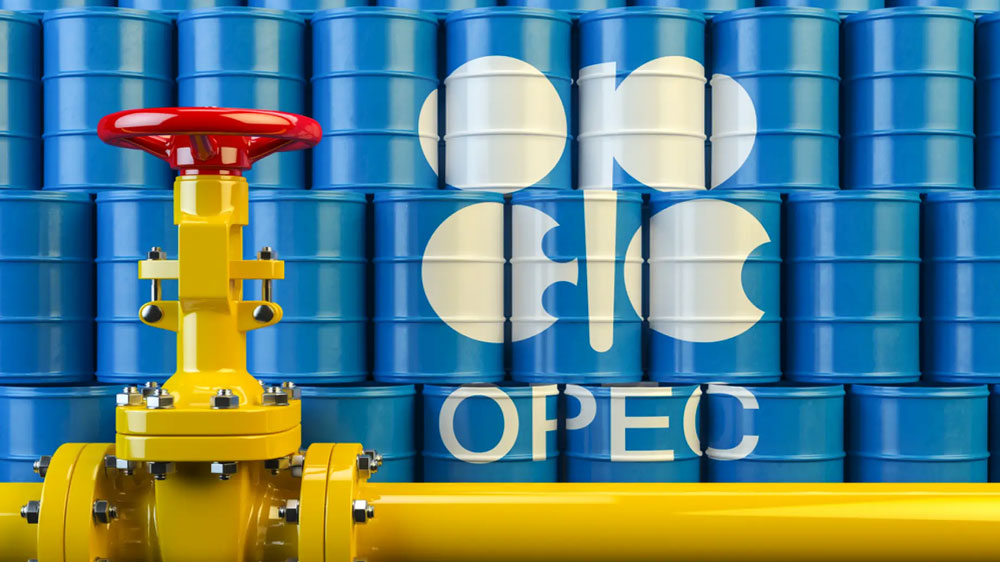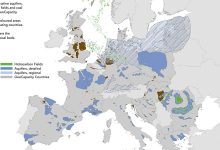OPEC’s Roadmap to Stabilization
What is OPEC’s roadmap for moving towards stabilization?
Admittedly, there is only a handful of industries globally that have been hit as hard and with so dire consequences as the oil and gas industry this year. 2020 is shaping up to be the most dramatic year in the history of oil markets, with a decade’s worth of change seeming to be taking place in a timespan of less than a year.
In a recent report, Fitch Ratings forecast that oil and gas exploration and production companies would lose up to USD 1.8 trillion in revenues this year, which is six times more than the retail sector is set to lose. Yet the long-term consequences are still unpredictable and potentially devastating. Global players of the industry brace themselves to withstand the impact, taking extreme measures of austerity. BP has been forced to cut around 10,000 positions from its workforce as it tries to slash and adapt to the new reality.
Shell and Chevron have also announced similar plans to reduce their workforces. Nevertheless, the employees are not the only impacted side of the new reality. Shell decided to cut its dividend for the first time since the end of WW2 and this was probably the single largest indicator of the long-term impact this pandemic has brought. The major oil players have prided themselves on paying out dividends regardless of market conditions in order to keep their shareholders happy. Shell’s decision to cut its dividends marks a shift in strategy that suggests the oil major is now determined to cut its debt going forward and focus on financial sustainability rather than just pleasing shareholders.
It surely is unclear if the oil industry will ever be able to recover to pre-pandemic conditions. From the sinking of the travel industry to the transformation of transportations today, oil demand is being attacked on all sides due to COVID-19. The regulatory pressure applied by governments to promote renewables doesn’t help either.
The situation was already bad, even before the Russo-Saudi oil conflict begun, melting the prices. The coronavirus pandemic has caused oil demand to drop so rapidly that the world was running out of room to store it. At the same time, Russia and Saudi Arabia flooded the world with excess supply. That double black swan event caused oil prices to turn negative for the first time on April 20. That peculiar ‘marriage of convenience’ ended up in tatters, the global price equilibrium destroyed and the oil industry changed forever. It was president Trump coming out of nowhere with a swift intervention stabilized the situation.
One of the major conclusions, coming out of that crisis was that OPEC (and its extended ‘alliance’ or ‘cartel’) cannot really handle these situations; it lacks the enforcing mechanisms and tools. That does not necessarily mean that it is not extremely important or even useful to many extents. The alliance’s achievements regularized the market and reduced oil volatility by as much as 50%. Furthermore, there are legitimate claims of the OPEC’s actions resulting to an average USD 175 billion annual increase in global GDP.
OPEC’s reaction
Following up with the efforts to further stabilize the market, after the recent meltdown, OPEC and the extended alliance already had pledged to cut output by 9.7 million barrels a day in May and June, which has helped prop up oil prices as demand for crude begins to recover. It was the deepest cut ever agreed to by the world’s oil producers.
The recent follow up meeting welcomed Ecuador, Indonesia, Trinidad and Tobago as observers and reaffirmed the continued commitment of the participating producing countries in the ‘Declaration of Co-operation’ (DoC) to a stable market, the mutual interest of producing nations, the efficient, economic and secure supply to consumers, and a fair return on invested capital. The members also recalled the decision taken by all Participating Countries in the DoC at the tenth (extraordinary) OPEC and non-OPEC Ministerial Meeting on 12 April 2020 to adjust downwards overall crude oil production.
The meeting noted additional adjustments from Saudi Arabia (1 million bpd); the UAE (100 trillion bpd); Kuwait (80 trillion bpd) and Oman (10 – 15 trillion bpd) in June; the announcements of voluntary adjustments from several countries, such as Norway and Canada; as well as various oil company statements revising downward production plans and shutting in supply.
The group met virtually over a video conference. The lone dissenter was Mexico, which stuck to its April agreement. Mexico stated that would continue to cut 100,000 barrels a day but would not go further. Indicatively, other members like Iraq and Nigeria failed to comply too. On Saturday, however, Iraq announced that it will now comply with the production cuts OPEC set forth in April. Iraq’s Ministry of Oil spokesperson, Assem Jihad, said in a press release that Iraq had faced economic difficulties that complicated its ability to comply earlier. Countries that didn’t comply in May and June agreed to compensate for their excess production by making additional cuts in July, August and September.
After a video conference lasting several hours, delegates said all nations had signed off on a new deal for a production cut of 9.6 million barrels a day next month. That’s 100,000 barrels a day lower than the reduction in June because Mexico will end its supply constraints, but a tighter limit than the 7.7 million barrels a day set for July in the group’s previous agreement.
It’s a victory for Saudi Arabia and Russia, who put a destructive price war behind them to cajole Iraq, Nigeria and other laggards to fulfil their promises to cut production. The two leaders of OPEC+ showed that they intend to keep a close watch on the oil market. The group’s monitoring committee will now meet every month to assess the balance between supply and demand amid an uncertain economic recovery from the global pandemic.
The cartel will meet again in the second half of June for another review of the oil market. Talks are scheduled on June 18 for the Joint Ministerial Monitoring Committee, which could recommend a further extension if it’s deemed necessary, pushing the production curbs into August, a delegate said. That panel will meet every month until December.
(Un)foreseen complications
OPEC’s recent agreement included (another) promise by all countries to compensate for any barrels they didn’t cut in May or June by making deeper reductions between July and September.
Diving a little deeper into the deal, complications can be observed clearly; one of the biggest challenges lies with Iraq, which is one of the biggest producers and almost completely dependent on its oil. They need it now more than ever since it is the most powerful (and potentially their only) lever to rebuild their economy and the country in general.
They have fallen behind in their initial commitment and based on the new one they would have to further reduce production by almost a quarter in order to catch up. This will cause internal strife and backlash within the country. Nevertheless, Iraq’s oil ministry said it is “fully committed” to cutting its production from June.
Skeptics insist on the fact that OPEC lacks the enforcing mechanism and will thus not be able to force all countries to comply. The tricky part is that this is a chain, and if a part breaks then we will have chain reactions. The skeptic analysts mentioned: “The OPEC leaders did not specifically respond to questions about the Iraqi finance minister’s request for a quota reconsideration based on economic conditions and living standards. We remain skeptical about Iraq’s ability to meet their enhanced output commitments.”
Traditionally, this kind of complications always existed; especially with Iraq and Nigeria. Their failures to comply were often covered by Saudi Arabia which exceeded their cutting quota just to maintain the equilibrium. Nigeria, Angola and Gabon, as well Kazakhstan and Azerbaijan, have been staying behind for a long time.
For Iraq, as well as Nigeria and Kazakhstan, “it may prove difficult for them to match their commitments 100%, because of the contractual agreements these countries have with upstream companies,” David Fyfe, chief economist at energy analytics firm Argus, told CNBC. Issues with enforcement may even be political, given the balancing act of Iraq’s relationships with Tehran and Riyadh, long-time adversaries.
“We expect Iraq to improve to 80% to 90% in coming months,” said Abhi Rajendran, a head of research at Energy Intelligence. “If prices are still weak there will be more scrutiny for them to be compliant. But if prices are much higher, like USD 50+, there will be less pressure on them.”
Stock market ambiguous indications
Despite the continuous market-fixing efforts in supply by the OPEC+ group, the world’s consumption of oil is unlikely to return to the levels before the coronavirus pandemic until late next year, according to the Morgan Stanley. While the market is heading for deficit in the second half of the year, there are a lot of inventories – at an unusually high level – which will start shrinking in Q4 and in the first quarter next year, Morgan Stanley said. The oil price rally in recent weeks “appears mostly supply- rather than demand-driven, and it is questionable how strong refinery runs can increase against this backdrop,” the investment bank said.
Global supply cuts and the easing of lockdowns in some countries has pushed prices higher after oil plunged below zero in April. However, the recovery is expected to be fragile and uneven, and there are concerns that producers may pump more with crude above USD 30 a barrel, adding to a glut. A new wave of coronavirus infections pushed the overall count in the U.S. past 2 million cases, with hospitalizations in Texas jumping.
“Prices may have run ahead of themselves over the last month or so,” Howie Lee, an economist at Oversea-Chinese Banking Corp. in Singapore, said. “As we approach the second half of the year, there will be some rethinking about how far this rally can continue given the high volume of stockpiles that still exists.”
Futures lost 4.1% to trade near USD 38 a barrel, erasing all of the gains from the past two sessions. Crude inventories unexpectedly rose recently, even as oil production fell, while gasoline stockpiles also saw a surprise expansion. Fed Chairman Jerome Powell said the pandemic could inflict longer-lasting damage on the economy and the central bank signalled it would keep rates near zero possibly for years to come. There are also fears that a second wave of infections in the U.S. may derail its fragile recovery.
“Everyone saves face with this agreement,” Jan Stuart, global energy economist at Cornerstone Macro LLC, said after a tentative deal was in place. “But it begs the question: What is the enforcement mechanism? I’m very curious to see how the organization is going to elicit greater compliance from the cheaters.”
“The oil market is on its way to recovery,” said Ann-Louise Hittle, oil analyst at Wood Mackenzie. “Supply has shifted dramatically already. Global demand is recovering too, with both May and June climbing from the low seen in April as the coronavirus-related shutdowns continue to ease.”
Next steps
All in all, the extended alliance of OPEC has made progress and taken steps forward. The future remains uncertain but for now the present seems a little better than before. The members of the Joint Ministerial Monitoring Committee (JMMC) of OPEC+ have been requested to closely review the general energy market conditions and related factors, oil production levels, and conformity levels with the DoC, assisted by the Joint Technical Committee (JTC) and the OPEC Secretariat. They are also charged with monitoring compliance and using their admittedly limited arsenal of tools for enforcement.
The JMMC is to meet monthly until December 2020 for this purpose, with the next JMMC set for 18 June 2020. It has also been agreed that an OPEC and non-OPEC Ministerial Meeting also will come together in Vienna early December 2020.







